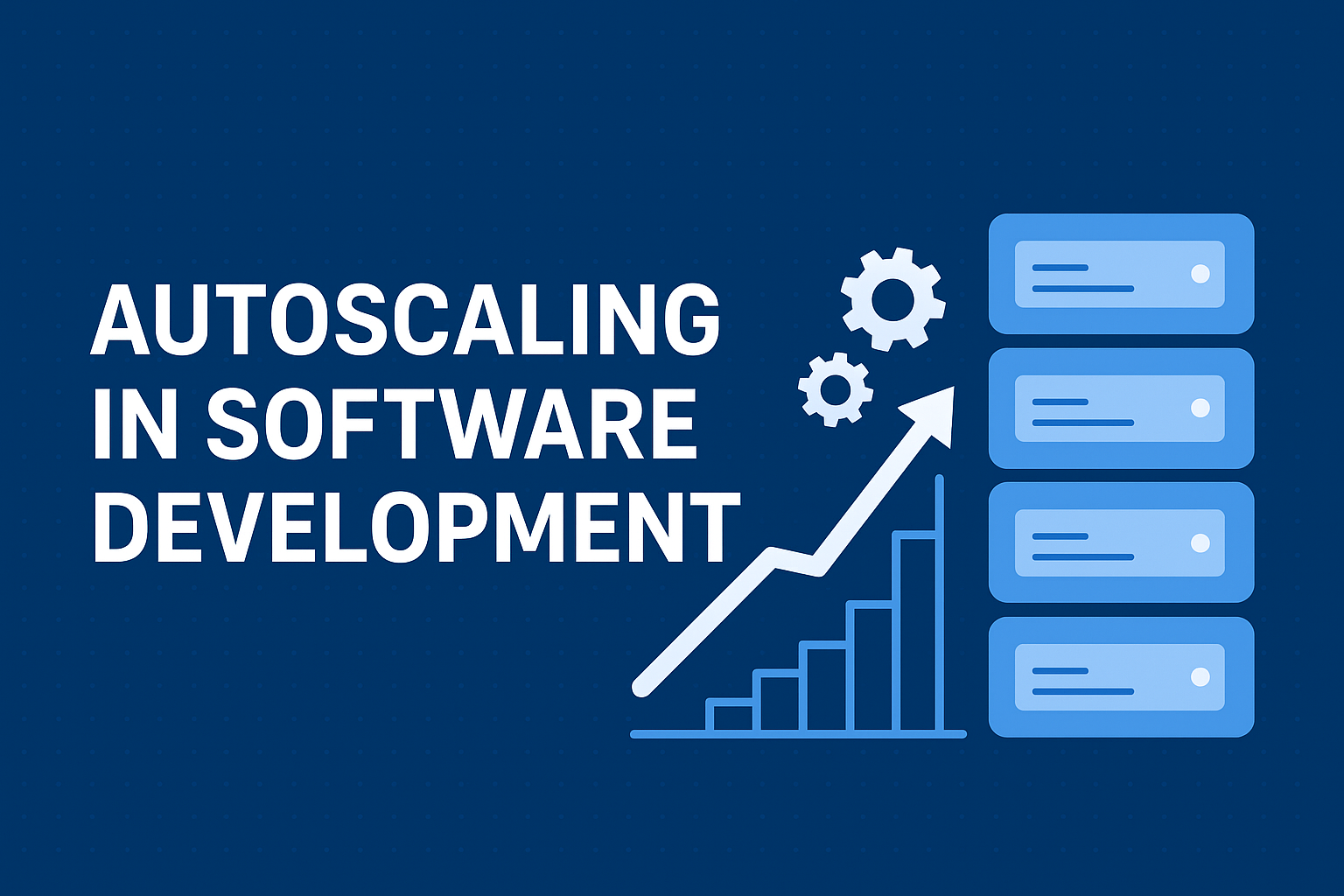In modern software development, applications rarely run on a single static server anymore. Instead, they run in dynamic environments where the system automatically scales up (adds more resources) or scales down (removes resources) based on demand. This process is called autoscaling.
Whether you’re running cloud infrastructure on AWS, Azure, GCP, or a Kubernetes cluster, autoscaling helps balance performance, availability, and cost.
1. What is Autoscaling?
Autoscaling is the automatic adjustment of computing resources based on real-time conditions.
- Scale up: Add more servers, containers, or CPU/memory when traffic spikes.
- Scale down: Remove resources during off-peak hours to save money.
Example analogy:
Think of a busy coffee shop. In the morning rush, the manager calls in more baristas. In the afternoon, when business is slow, fewer staff are needed. Autoscaling works the same way for servers.
2. How Autoscaling Works
Most autoscaling systems follow this general process:
- Monitoring:
A metrics service collects performance data — CPU usage, request counts, queue lengths, etc. - Thresholds & Rules:
If certain metrics exceed or drop below defined thresholds, scaling actions are triggered. - Scaling Actions:
- Vertical scaling: Increase resources for a single instance (e.g., more CPU/RAM).
- Horizontal scaling: Add or remove instances/pods.
- Cooldown Periods:
Prevents rapid scaling changes due to short spikes.
3. Types of Autoscaling
| Type | Description | Example |
|---|---|---|
| Reactive Autoscaling | Responds after metrics cross thresholds | Scale up when CPU > 80% |
| Proactive Autoscaling | Predicts demand using trends | Add capacity before Black Friday |
| Scheduled Autoscaling | Scales at specific times | Increase capacity from 6–9 AM daily |
4. Example — AWS Auto Scaling (Infrastructure Level)
Here’s how you might set up autoscaling for an EC2 instance group using AWS CLI:
# Create a Launch Configuration
aws autoscaling create-launch-configuration \
--launch-configuration-name myAppConfig \
--image-id ami-0abcdef1234567890 \
--instance-type t3.micro
# Create an Auto Scaling Group
aws autoscaling create-auto-scaling-group \
--auto-scaling-group-name myAppGroup \
--launch-configuration-name myAppConfig \
--min-size 2 \
--max-size 10 \
--desired-capacity 2 \
--vpc-zone-identifier "subnet-abc123,subnet-def456"
# Set Scaling Policy
aws autoscaling put-scaling-policy \
--auto-scaling-group-name myAppGroup \
--policy-name cpuScaleOut \
--scaling-adjustment 2 \
--adjustment-type ChangeInCapacityHow it works:
When CPU usage exceeds your CloudWatch alarm threshold, AWS automatically adds more EC2 instances to the group. When traffic drops, it terminates extra instances.
5. Example — Kubernetes Horizontal Pod Autoscaler (Application Level)
In Kubernetes, you can scale pods in a deployment automatically.
Deployment (app.yaml):
apiVersion: apps/v1
kind: Deployment
metadata:
name: myapp
spec:
replicas: 2
selector:
matchLabels:
app: myapp
template:
metadata:
labels:
app: myapp
spec:
containers:
- name: myapp-container
image: myapp:latest
resources:
requests:
cpu: 200m
limits:
cpu: 500mAutoscaler (hpa.yaml):
apiVersion: autoscaling/v2
kind: HorizontalPodAutoscaler
metadata:
name: myapp-hpa
spec:
scaleTargetRef:
apiVersion: apps/v1
kind: Deployment
name: myapp
minReplicas: 2
maxReplicas: 10
metrics:
- type: Resource
resource:
name: cpu
target:
type: Utilization
averageUtilization: 80
Apply to cluster:
kubectl apply -f app.yaml
kubectl apply -f hpa.yamlHow it works:
Kubernetes monitors CPU usage. If the average CPU utilization across pods exceeds 80%, new pods are created automatically. When usage drops, pods are removed.
6. Benefits of Autoscaling
- Cost efficiency: Pay only for what you use.
- High availability: System stays responsive under load.
- Reduced manual intervention: No need to manually add/remove servers.
- Flexibility: Works for both infrastructure (servers) and applications (pods/containers).
7. When NOT to Use Autoscaling
- When workloads are predictable and constant.
- For stateful applications that can’t easily scale horizontally.
- If scaling delays cause user experience issues (e.g., cold start times).
Conclusion
Autoscaling is a cornerstone of cloud-native development. By automatically adapting to demand, it optimizes cost, improves performance, and frees developers from constant capacity planning. Whether at the infrastructure level (AWS Auto Scaling) or application level (Kubernetes HPA), autoscaling ensures your system is ready for anything — from a sudden traffic surge to a quiet Sunday evening.
